August 30, 2023
In 2023, 14 invasive species research projects came to a close for the Minnesota Invasive Terrestrial Plants and Pests Center (MITPPC).
These projects have been operating for several years, some starting as far back as 2016. Despite the unpredictable circumstances of the pandemic, scientists accomplished vital discoveries towards detecting, preventing, and mitigating damage done by land-based invasive species in agriculture and natural settings in Minnesota. They address invasive species issues in agriculture, forest health, prairies, wetlands, and invasive species risk assessment.
Far-reaching impacts
MITPPC receives financial support from the Environment and Natural Resources Trust Fund as recommended by the Legislative and Citizen Commission for Minnesota Resources (LCCMR). This support enables MITPPC to make a huge impact on the state at large.
For example, these projects sponsored many graduate students in master’s and PhD programs. University faculty and staff from different disciplines joined together to work towards common goals, breaching departmental differences. They collaborated with University partners like Master Gardeners, the Plant Disease Clinic, and the Minnesota Supercomputing Institute. Project team members have produced numerous research papers, some of which are still in writing or waiting to be published, and disseminated their work through presentations and at conferences across the country.
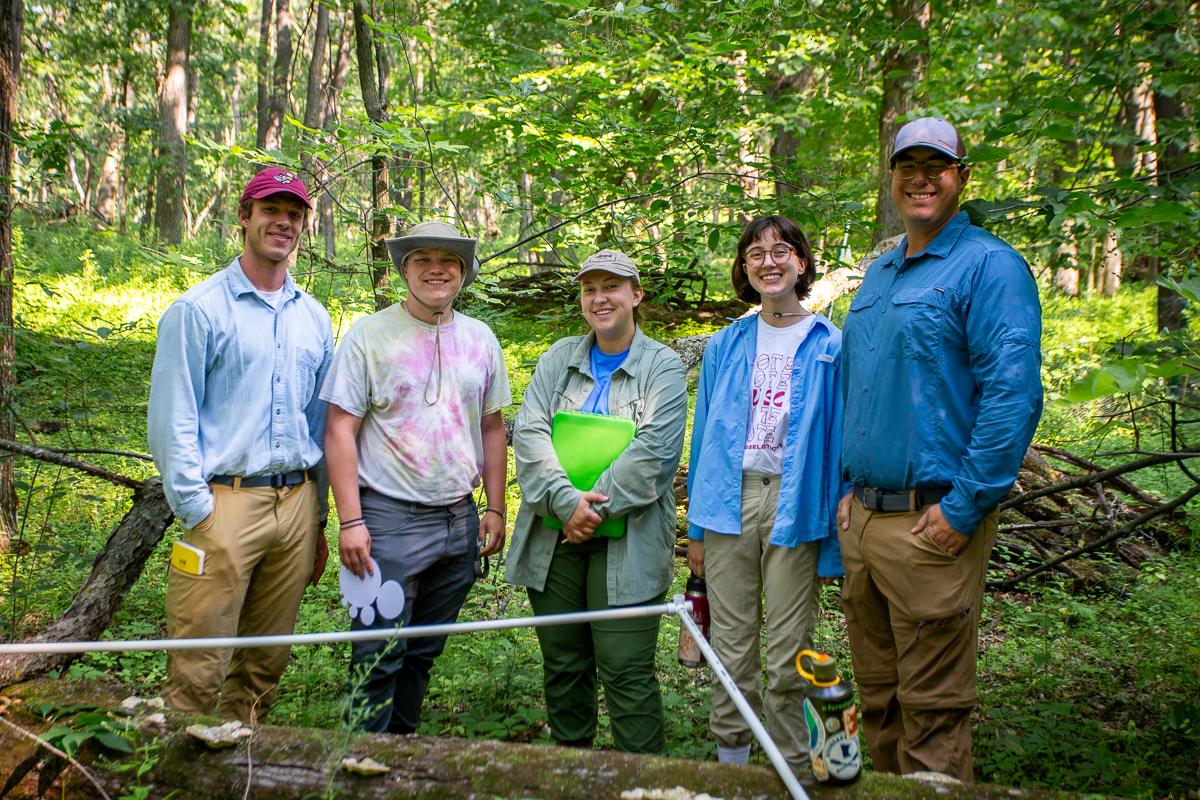
Each research team also developed partnerships with external public and private groups. Some of these include the US Department of Agriculture, NASA, Minnesota Departments of Agriculture and Natural Resources, US Forest Service, regional, state, and city governments, Minnesota tribal governments, other universities like Purdue and Michigan State, and companies such as Frontline Biotechnologies Inc. and Gencove.
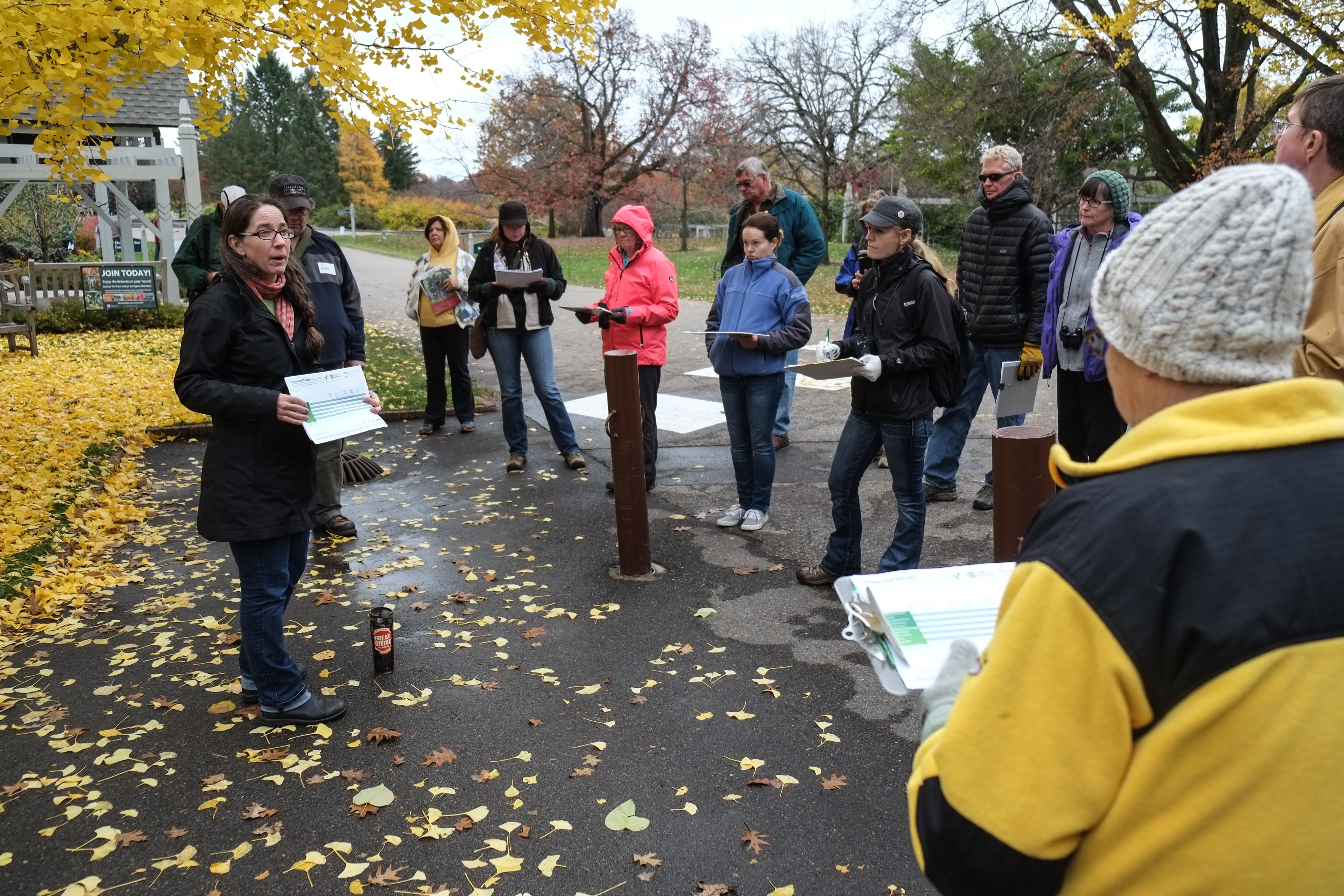
It’s difficult to summarize all of this incredible work in one article, so we encourage you to read the summaries below and visit the projects that interest you. Each project page includes background information, research questions, project outcomes, links to research papers, and media coverage.
Project summaries
Agriculture projects
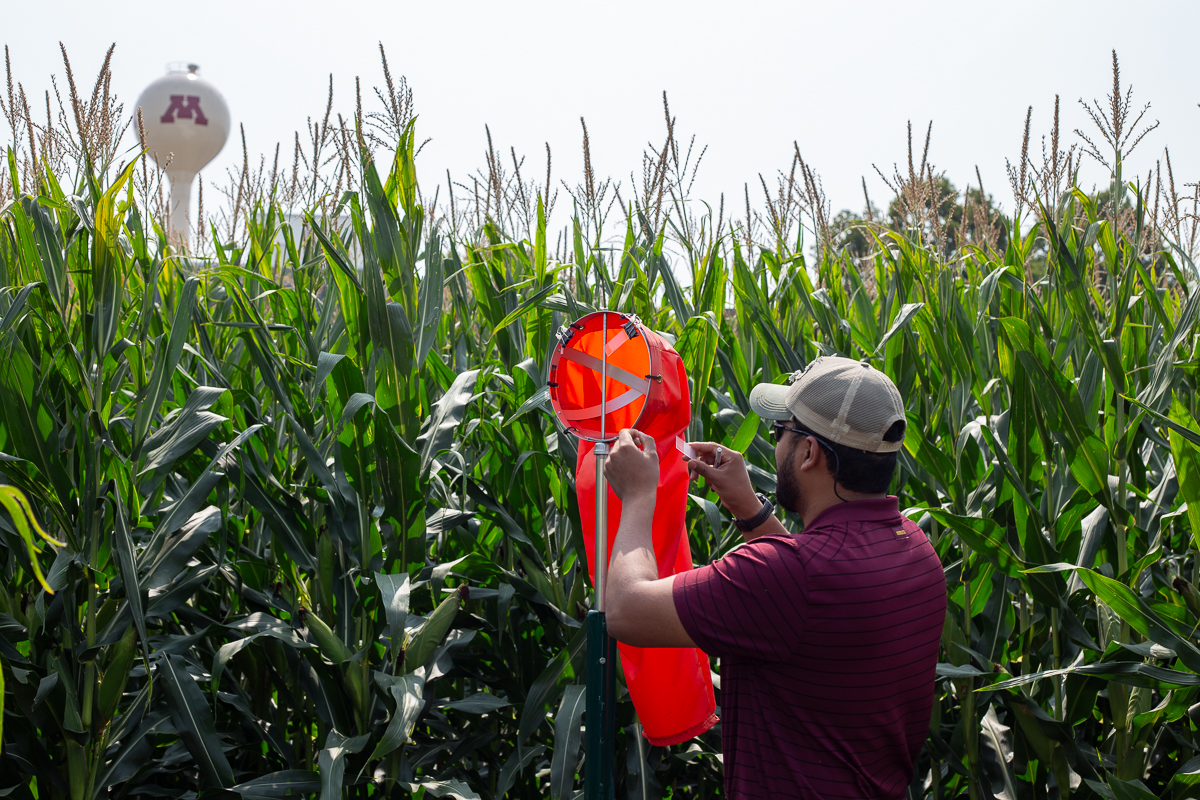
Detecting hybrid barberry and investigating its role in rust epidemiology, principal investigator Pablo Olivera Firpo. Firpo and team developed a protocol to accurately detect the parental and hybrid alleles enabling accurate identification of hybrid barberry and confirmed its presence in Minnesota.
Distribution, risks, and management of Phyllachora maydis, the causal agent of corn tar spot, principal investigator Dean Malvick. This project team made significant progress in developing knowledge and tools for the research and management of corn tar spot. They identified the pathogen in an additional 25 Minnesota counties, confirming that it continues to spread.
Confronting soybean aphid with advanced plant breeding and remote sensing (phase 2), principal investigator Robert Koch. Koch and co-principal investigator Aaron Lorenz successfully developed multiple aphid-resistant varieties. The team also advanced the ability to use drones to detect soybean aphid. Overall these outcomes will result in more effective aphid control.
Forest health projects
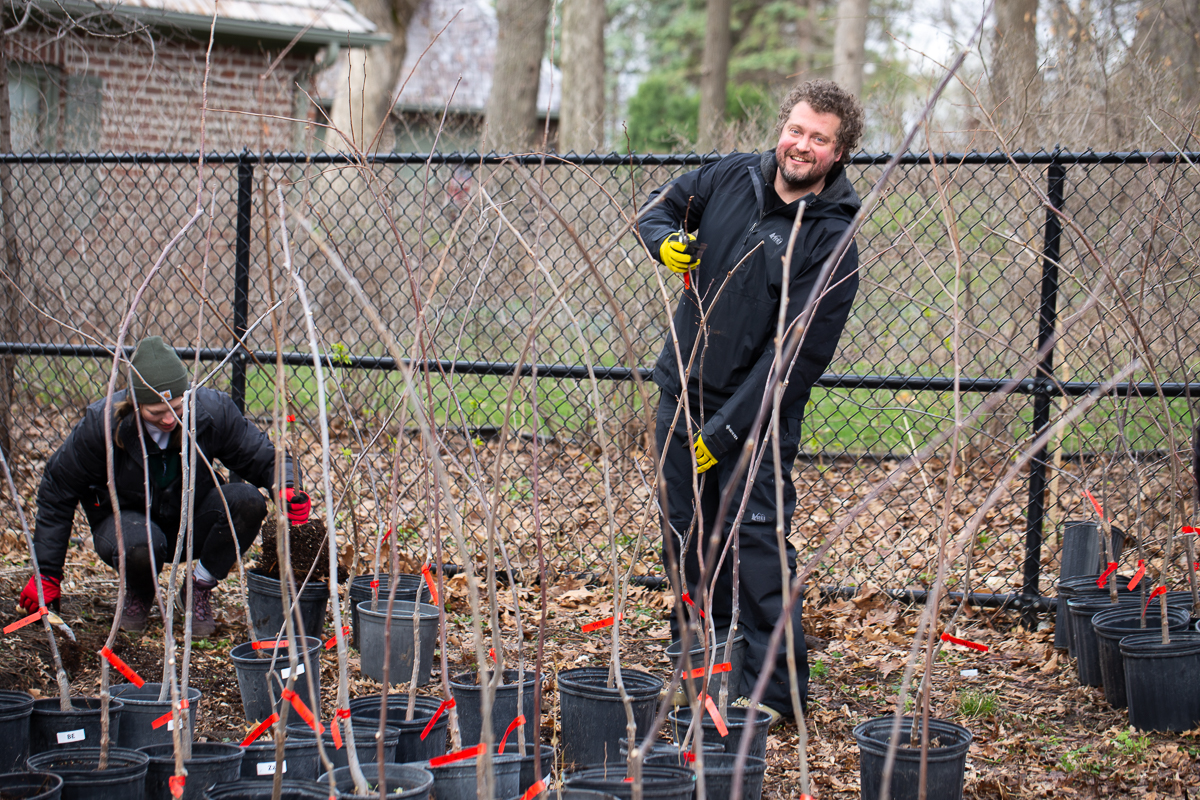
Novel diagnostic tools for rapid and early detection of oak wilt (phase 3), principal investigator Abdennour Abbas. This research team developed a new, patented assay that allows rapid, accurate detection of the fungus Bretziella fagacearum that causes oak wilt. The assay was validated using B. fagacearum, however it could be validated for use on other pathogens.
Detection and treatment of oak wilt (phase 2), principal investigator Jeannine Cavender-Bares. This developed methods and approaches to detect oak wilt infection remotely using spectral biology. They also documented management best practices to prevent the spread of oak wilt using the two-pass vibratory plow protocol.
Biocontrol of glossy buckthorn and reed canarygrass with rust fungus, principal investigator Pablo Olivera Firpo. Firpo and team gave us a better understanding of the biology, distribution, and hosts of Puccinia coronata var. coronata, a crown rust, including its effect on common cereal crops.
Developing Dutch-elm resistant trees, principal investigator Ben Held. Held and his team have identified, propagated, and tested survivor elms from the Minnesota landscape. They have created grafts of these trees for both planting and future research.
Cover it Up! Using plants to control buckthorn (phase 2), principal investigator Peter Reich. Reich and team developed strategies to improve and diversify the native plant community while discouraging buckthorn reestablishment. They overturned long-held assumptions that common buckthorn seeds survive for up to 6 years, finding that the seeds only survive 1 or 2 years in the soil.
Exploring public perception of emerald ash borer management through virtual and augmented reality, principal investigator Ingrid Schneider. This team merged research on social perceptions and silvicultural strategies to provide guidance for natural resource managers to better communicate with the public about forest management, specifically when managing in response to emerald ash borer.
Prairie and wetland projects
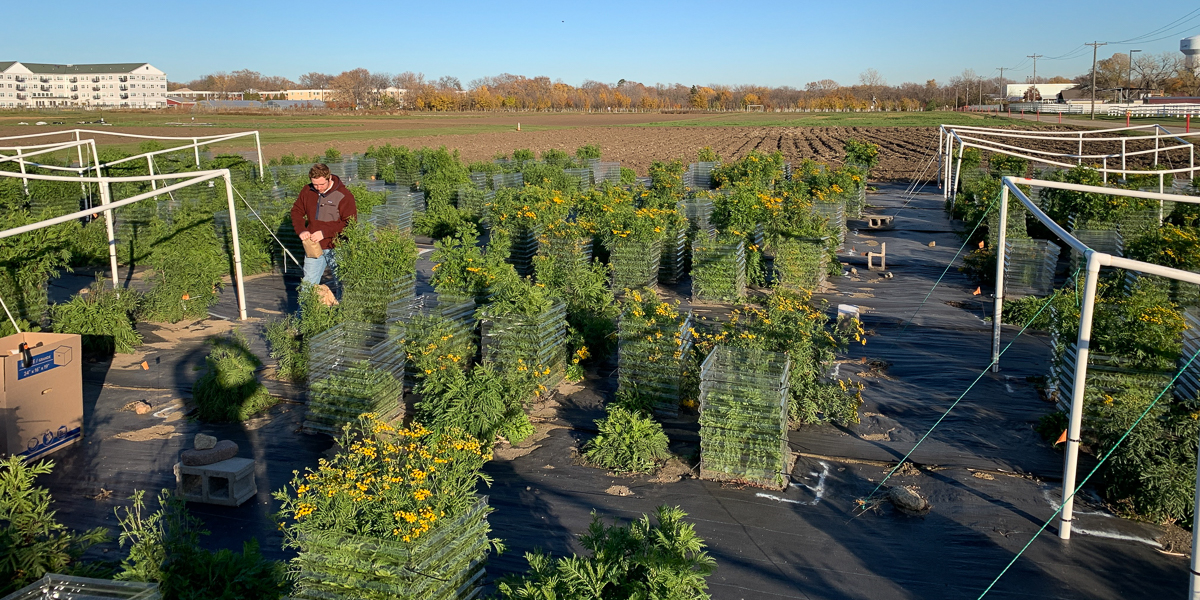
Improve invasive plant management using climate based phenology models, principal investigator Rebecca Montgomery. Montgomery and her team developed climate-based phenology models of key phenological events for wild parsnip and Japanese knotweed. Land managers can use the data to estimate phenology of these species given current and projected seasonal temperatures.
Improved detection and management of leafy spurge and common tansy, principal investigator Ryan Briscoe Runquist. Using cutting-edge, deep learning computer models, large scale field experiments, and genomic analyses, researchers improved predictions about the capacity for range expansion of leafy spurge and common tansy. Both species demonstrated trait evolution during range expansion.
Management of invasive knotweeds, principal investigator Alan Smith. Smith’s team confirmed the presence of 3 distinct knotweed species and their hybrids in Minnesota. They also provided guidance for land managers that includes plant removal and herbicide treatment recommendations.
Detection and monitoring of invasive Phragmites, principal investigator Joseph Knight. Researchers found that drones and machine learning can be used to accurately map invasive Phragmites stands. For land managers, the process of mapping an area for Phragmites could take place in a day or less with the appropriate technology and imagery.
Risk assessment of invasive species
Expanding and strengthening the prioritization of terrestrial invasive species in Minnesota (part 1), principal investigator Amy Morey. This project is part of ongoing research at MITPPC to evaluate species and provide updates to MITPPC’s list of prioritized species for research. Morey completed a comparison of commonly used methods for modeling climate suitability of invasive insects to learn if one type of modeling approach was more useful for risk assessment.
Find all MITPPC projects past and present, or check out our newest projects that started this year.
We anticipate announcing a new request for proposals in 2024 for projects that would start in 2025. If you’re a researcher interested in funding, learn more about eligibility and requirements. We’d love to hear from you.
To stay connected, learn about funding, and hear about research as it’s released, sign up for the MITPPC newsletter. Follow us on Facebook or Twitter.